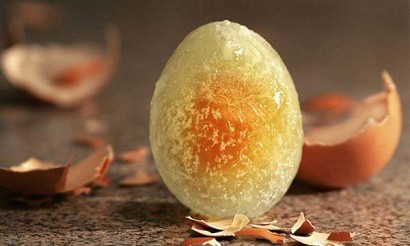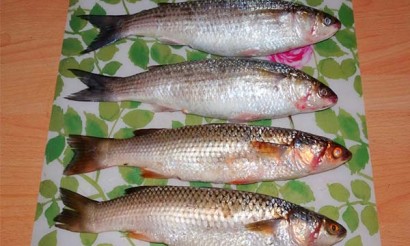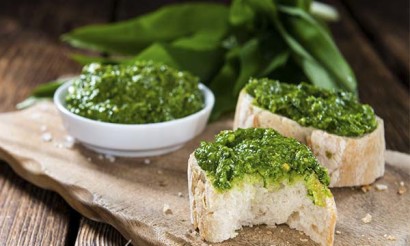What fish have few bones: the list of sea and river dwellers
Among fish there are no such species where there would be no bones completely. But there are those among the underwater dwellers who have noticeably fewer bones than others. They are most valued by cooks and housewives. Most of their representatives belong to marine and migratory species, but among river species there are also those who have few bones.
- Advantages of fish without bones
- Saltwater fish with the fewest bones
- Fish list
- The safest
- Most expensive
- Cheapest
- Least diet
- Tastiest
- Best for frying
- River fish with few bones
- Fish list
- The safest
- Most expensive
- Cheapest
- Least diet
- Tastiest
- Best for frying
- Which bone-in fish is the healthiest
- How to cut the fish properly
- What to do if there's a fish bone stuck in your throat
Advantages of boneless fish
- First of all, such fish is easier to cook. It does not require careful handling. It can be used in salads, pastries, snacks, without fear that a small bone will be caught in the dish.
- Of the representatives of fish, which has almost no fork bones, prepare for children. In this case, you can not worry that the child will be traumatized by the missed bone.
- Cartilage when cooked has the property to soften and is not even felt in the finished dish.
- Such fish makes a delicious soup, can be baked in the oven, fried and served with a side dish. Compared with their bony counterparts, it is much faster to cook.
Saltwater fish with the fewest bones
Cod, mackerel and horse mackerel are the main representatives of sea creatures, which are referred to fish without bones. This does not include such exotic representatives as shark and moray eel.
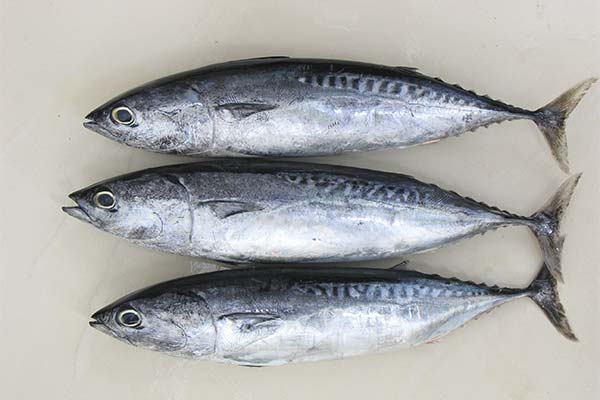
The list of fish
To the sea fish "without bones" refers the following representatives.
From the order of codfish:
- macrourus;
- pollock;
- hakes (hakes);
- haddock;
- saffron cod (including northern and far eastern).
From the mackerel family:
From the order perch:
- Braum or sea bream (including Atlantic and Japanese sea bream);
- Icefish (pikeperch).
From the stachyderm order:
- karanxes;
- womers (selenas);
- yellow-banded celar;
- yellow-tailed sea lacustrine;
- other fish that bear the commercial name of "horse mackerel.
From the genus flounder:
- halibut (sea tongue);
- European sole;
- Other fishes of this family that have the common name of "flounder".
From the order of scorpionfish:
Other sea fish without bones include mullet, doradoSea eel, sea bass.
The safest
All fifteen species of tuna are considered the safest of the boneless fish that live in the depths of the ocean. They were part of the diet of people living on the coast, already in ancient times. Its meat does not harbor parasites that can be found in other fish. The dishes made of tuna do not cause allergies. Therefore, they can be safely eaten by pregnant women, mothers during lactation. Often, this fish is used for complementary feeding to children under the age of one year.
The most expensive
Tuna also belongs to one of the most expensive species of marine fish. Thunnus orientalis (so-called blue) is especially valuable. This representative of the underwater world lives in the subtropical waters of the Pacific Ocean. Because of its high taste qualities, it was caught in large quantities in the 20th century. Because of this the population has decreased markedly. Now the bluefin tuna species has a near-vulnerable status. The meat of the fish has a burgundy color before being cooked. Cooked, it takes on a milky color. The fillet is similar in texture to beef. Widely used in Japanese cuisine for cooking sushi and sashimi.
The cheapest
Among the most inexpensive boneless inhabitants of the depths of the sea is sardine. True, it is almost impossible to buy it fresh or frozen. More often than not, the entire catch ends up in the processing plants, where it is used to prepare canned food.
Alaska pollock, cod, haddock, bullhead and hake are also considered very inexpensive. Especially if you buy them in the places where these fish live. Fishermen in seaside settlements often sell just-caught representatives of these species very cheaply.
The most dietary
Dietary varieties of fish are considered those in which the fat content is minimal. As a rule, it should not exceed 4%. But you should remember that before spawning, the females fatten up. Therefore it is better to buy that fish, which has already spawned. The greatest benefit to the body it brings in a boiled form. Approximate ratio of fat and fat in the most lean sea creatures:
- Boiled cod - 17.8 g proteins, 0.7 g fats, 0 g carbohydrates (78 kcal);
- Boiled flounder - 18.3 g protein, 3.3 g fat, 0 g carbohydrates (103 kcal);
- Boiled haddock - 17.1 g proteins, 0.2 g fats, 0 g carbohydrates (71.5 kcal).
The tastiest
As a rule, sea fish is tastier, more tender and fatty. This is also claimed by the inhabitants of seaside cities. But not everyone will agree with this. Everyone has his own taste preferences. Habits play an important role, especially if they have been formed since childhood. There is a saying that no food is tasteless. There are ineptly prepared dishes.
The generally accepted king of fish is the tuna. It is eaten raw, fried, and canned. It is especially prized in Japan.
Best for frying
It is easiest to fry fatty fish. It will never be dry. For cooking dinner, you can take large pieces, but for the festive table it is better to fry fillets or steaks. Very tasty is the pan-cooked halibut meat. Juicy and buttery, it will be greatly appreciated by the guests.
If white meat is preferred, you can take dorado, flounder, cod or sea bass. They are served as a main course by adding a side dish of vegetables, potatoes or cereals.
River fish with few bones
Among freshwater dwellers, there are far fewer fish with few bones. Most of them are semi-anadromous or migratory species. They spend part of their lives in the seas or oceans, and part in rivers, in most cases entering freshwater to spawn. And, for example, the river eel, on the contrary, spawns exclusively in the sea.
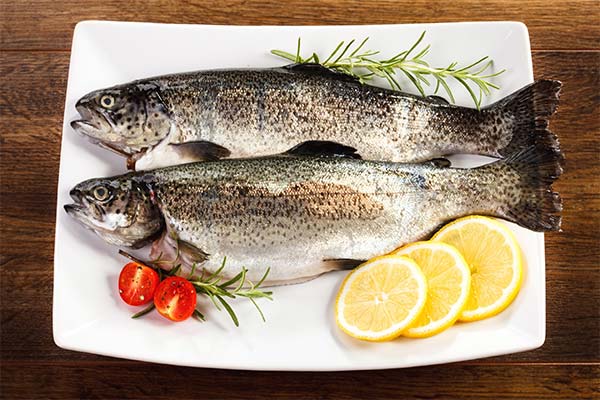
List of fish
Some of the best-known species of fish with few bones include sturgeons, salmonids, and other members of the underwater kingdom.
Sturgeons:
- beluga;
- Kaluga;
- Russian sturgeon;
- shovelnose;
- spike;
- starred sturgeon;
- sterlet.
Salmonids:
- pink salmon;
- chum salmon;
- salmon;
- taimen;
- trout;
- whitefish;
- whitefish;
- silver salmon;
- sockeye;
- chinook salmon
- grayling
- omul;
- char.
Of the freshwater fish we can distinguish:
The safest
River fish is considered more "dirty" compared to sea fish. It is more often infected with various parasites. Moreover, it is often caught in places where humans do their activities, polluting water bodies. Nevertheless, there are fish that live only in ecologically clean water. These include pikeperch.
It needs running water with a lot of oxygen in order to live. As soon as stagnant water is formed, or foreign impurities get into it, the fish dies out. Therefore, it can be eaten without fear.
Most expensive
Prices for fish can depend on many factors. Here, not only the quality of meat plays a role, but also in what conditions this specimen grew up. Representatives of underwater fauna raised in fish farms will be cheaper than those caught in the natural habitat. Those species that spawn less frequently cost noticeably more than others. The most expensive species of fish can hardly be seen on store shelves. They go directly to restaurants.
The most expensive fish are beluga. These fish live up to a hundred years and spawn about seven times in their lifetime. The albino beluga is particularly highly prized on the world market because it spawns even less frequently. Its eggs have an unusual golden hue and are packaged in special jars of solid gold.
The cheapest
Sea fish has always been more expensive than river fish. But in recent decades, all that has changed. The fact is that freshwater fish began to be raised in fish farms, which is quite costly.
To prepare a budget fish dish without bones, you should opt for burbot, pikeperch, lamprey or whitefish.
The most dietary
From river fish with a small number of bones, burbot and pikeperch can be classified as dietary. Only cook them either steamed or boiled. In this form, the number of kcal per 100 grams of edible part will not exceed 100.
The most delicious
Fishermen joke that the most delicious is the fish that is caught with their own hands. Culinarians believe that salmon, trout, and, of course, sturgeon family members have the best taste.
The best for frying
Before frying river fish, you must first get rid of the smell of slime, if it is felt. To do this, the carcass is soaked in salt water for a few hours.
It is important not to overdry fish with red meat. Then the fillet will remain tender and delight with its range of flavors. Cooking salmon, chum salmon, pink salmon, coho salmon, you can use spices. Then, those who are not particularly fond of fish, will not leave on the plate even a small piece.
It is best to cook trout on the grill. Small cuts on the sides will help the meat roast evenly.
What fish without bones is the most useful
The most useful dietitians consider those types of fish that contain more fish oil. By default, this applies to the inhabitants of the seas and oceans. Especially easily assimilated necessary substances for the human body from young fish. Therefore, if you want to benefit, you should not try to choose the largest fish in the store. Of the available varieties of fish, you should give preference to tuna. It is not only tasty, but also useful. His meat contains many useful micro- and macronutrients and vitamins.
Of the anadromous fish doctors recommend salmon, of the river - trout. These species can help with a deficit of fatty acids, help restore the nervous system during stress, stimulate the brain.
How to cut fish properly
Cutting fish is not a difficult task, but you still need to train your hand. So do not get upset if it did not turn out perfectly the first time.
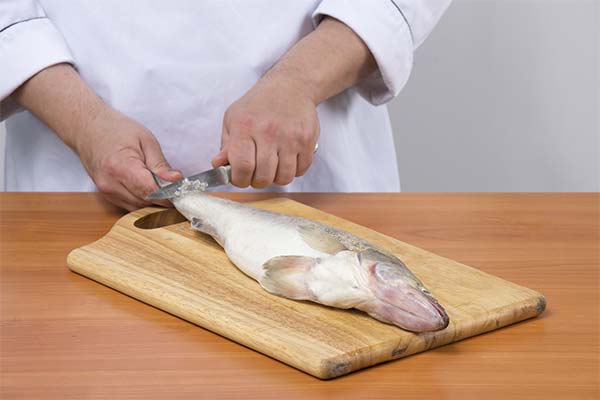
- First of all, the fins are cut off from the carcass with kitchen scissors and its scales are removed. It is better to do it with a special knife from the tail to the head. Having cut the belly, they clean out the insides. After that, the fish is washed.
- Then, on the table, they separate the head. Make an incision along the spine with a thin knife. Then with careful sawing movements, keeping the blade parallel to the table, begin to cut the meat along the backbone, pulling the fillet with the hand.
- After separating the meat on one side, turn the carcass over and do the same procedure, but starting from the tail.
- If you intend to use fish without skin, you will need a flat knife. They make a cut with it, put the fillet on the table upside down and pull the skin, separating the soft part with the blade. The dark layer of meat near the skin can also be cut without sparing. But to get a quality fillet, you should try not to damage it.
- After that, it is necessary to check the meat for bones. You can do this by sliding your hand over it, pressing a little. The bones are removed with a pair of tweezers.
Remember, the fish should be cut only with a sharp knife. It is not necessary to hurry, as the appearance of the finished dish will depend on the accuracy of all operations.
What to do if you have a fishbone stuck in your throat
A fish bone stuck in the throat is not only unpleasant, but also dangerous. The sharp edges can damage the mucous membrane and cause inflammation. If you do not take the necessary measures in time, suffocation can occur. This is especially true for children.
In no case you should not put pressure on the throat, trying to push the bone outward. This way, it will only enter the soft tissue even more.
You can try coughing. If the bone is shallow, it can come out on its own. If this does not happen, it is worth using improvised means: for example, a flashlight and long tweezers.
Folk recipes advise to eat some soft food: chewed bread crumbs, a piece of banana.
If these methods have not helped, there is blood in the saliva, you feel a strong pain, then do not delay seeing a doctor. There is no need to self-medicate even if a child is hurt.
«Important: All information on this site is provided for informational purposes only. purposes only. Consult a specialist before applying any recommendations. specialist before you use any of the recommendations. Neither the editors nor the authors shall be liable for any possible harm caused by materials."


